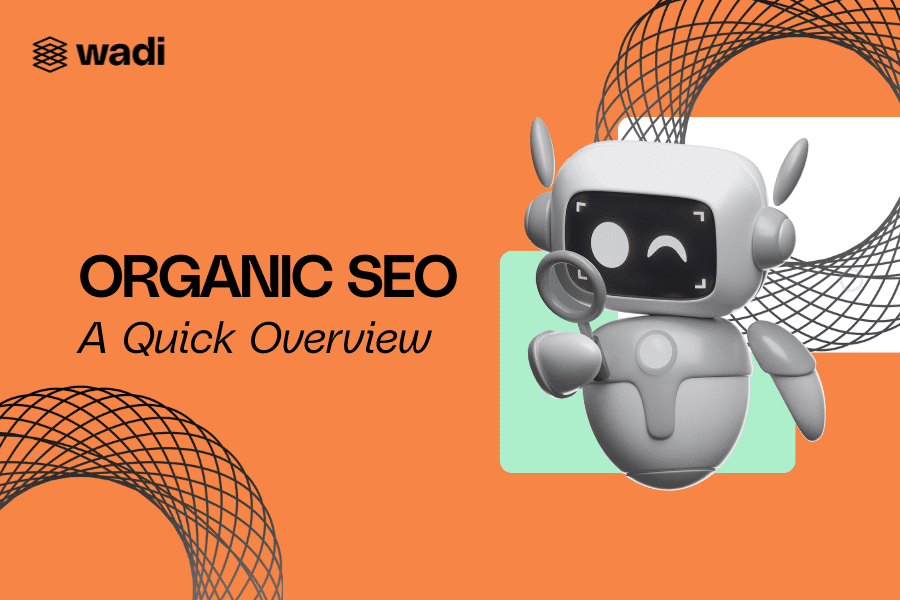Table of Contents
ToggleIn February 2024, there were over 1 billion sites on the World Wide Web (www). In this crowded and noisy digital universe, how do you get your business website to stand out?
The answer: adopt the five SEO principles highlighted below.
SEO Principles to Adopt in 2024
Implementing these five SEO principles will help you boost your site’s ranking in search engine results pages (SERPs) and attract higher-quality traffic.
#1: Do keyword research and understand users’ search intent
Solid keyword research is one of the most basic SEO principles. By thoroughly researching the keywords that your target audience uses on search engines to search for information, you can better understand what they are looking for and then optimize your website’s content to satisfy their needs.
When researching keywords, try to understand users’ search intent: their goal behind a specific query.
Consider three keywords that look similar but have very different search intents.
Thus, users searching for dog groomer are investigating brands or services (search intent: Commercial), those searching for dog groomer near me likely want to engage in a transaction (search intent: Transactional), and users searching for mobile dog grooming are simply looking for information (search intent: Informational).
Since these users have different search intents, they require different types of content to meet their needs. An understanding of the intent will guide you in creating relevant content that enables users to achieve their goals and also boosts your SERP rankings.
#2: Implement on-page SEO
On-page SEO is about optimizing various elements on your website so users can better understand it and search engines can better gauge its content relevance and quality, which will ultimately boost its SERP rankings. These elements include:
- Title tag: Every page on your website should have a unique and descriptive title tag that accurately reflects its content.
- Header tags: Use H1, H2, H3, etc., tags so search engines can understand your site’s structure and hierarchy.
- URL structure: Implement user-friendly URLs that include relevant keywords and reflect the content of each page.
- Optimized images and mobile-friendliness: Images with descriptive file names and alt attributes and a mobile-optimized website both improve user accessibility and boost a site’s SERP rankings.
- Internal links: Include internal links within site content to help engines to discover and index new pages. This will positively impact the visibility of those pages.
Another tip: implement meta description optimization. Although meta descriptions don’t directly impact SERP rankings, they do influence site click-through rates, and thus site traffic.
#3: Create high-quality content
High-quality content that’s a) relevant to your target audience and b) addresses their search intent can improve your site’s SERP visibility and ranking.
Consider a Google search for “cybersecurity marketing”.
The user needs information about effective marketing strategies for cybersecurity companies. They find it on this blog from Wadi, which provides high-quality content that exactly matches their specific search intent and appears inside the Top 15 SERP results.
To create high-quality content for your website:
- Make it easy to read with headers, sub-headers, and short paragraphs.
- Use the right keywords on every page. Avoid the keyword “stuffing” and ensure that they appear naturally and seamlessly in the text.
- Create different types of content to satisfy the needs of different user groups.
- Offer personalized content based on user preferences or demographics to improve site engagement and experiences.
Should you use AI to create content?
If the AI tool generates useful, high-quality content, then yes, you can. However, AI-generated content can occasionally be inaccurate or tone-deaf so do have a human review it before publishing it online.
#4: Implement technical SEO
Technical SEO optimizations enable search engine bots to crawl, index, and understand your site. These include:
- Website structure: A logical, hierarchical website structure allows both users and search engines to easily navigate the site.
- Speed: Improve page loading times by minimizing server response time, implementing browser caching, and compressing images.
- XML sitemap: An XML sitemap helps Google crawl your site and match pages to relevant search queries.
- Robots.txt file: Create a robots.txt file if you don’t want Google to index certain web pages.
- Security: Secure your website with the HTTPS protocol and implement SSL/TLS certificates to ensure a safe browsing experience for users.
If your site is JavaScript-heavy, implement these JavaScript SEO best practices to improve site usability and ranking:
- Implement unique title tags and meta descriptions for every page
- Allow crawling of JavaScript files
- Remove duplicate content from your site
- Create error pages by using a JavaScript redirect to a page that responds with a 404 status code or by adding a no index tag to a failing page with an error message
#5: Think about user experience and engagement
Optimizing user experiences (UX) can improve your site’s Google ranking.
One way is to improve site navigation. Navigational elements like menus, links, and labels enable users to easily move around your site. They also help search engines to discover and index new pages.
Other ways to improve your site’s UX:
- Adopt a responsive and accessible website design.
- Ensure that all branding elements consistently reinforce the brand identity.
- Choose legible fonts, high-quality visuals, and non-jarring colors.
- Use clear, concise call-to-action (CTA) buttons or links.
- Provide animations or progress bars to reassure users that content is loading.
Conclusion
The above SEO principles will help you to improve your site’s visibility and attract your target audience. Need support to put these ideas into practice? Wadi can help! We are a specialized SEO services provider that can implement an effective SEO program for your business. Contact us to get started.






